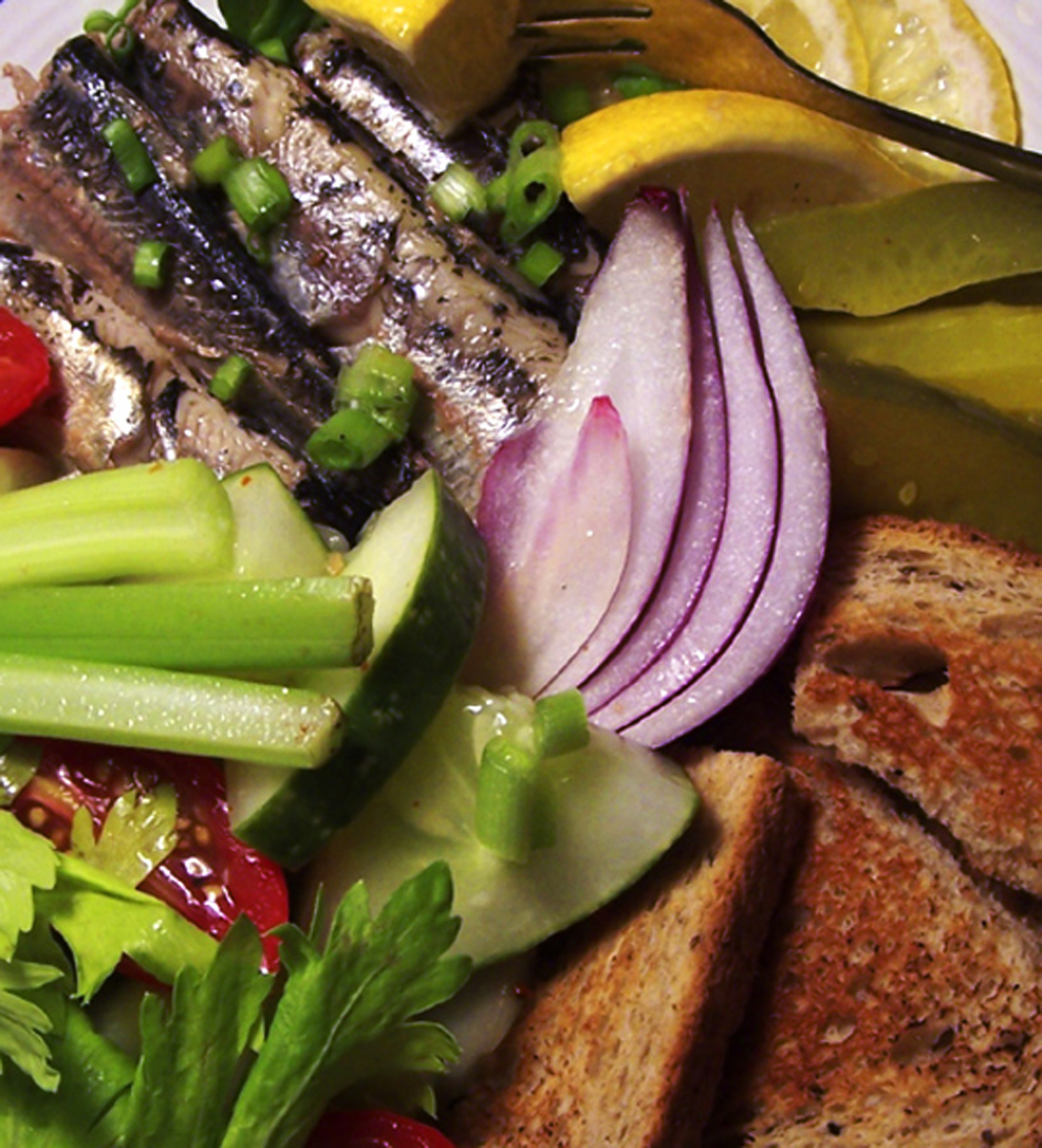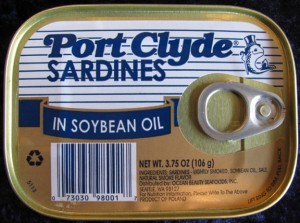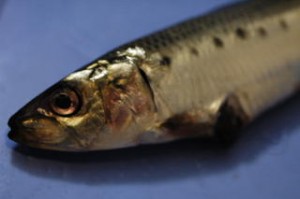
Some years ago an obscure editor at a very well-respected and well-known fashion magazine prevailed upon his famous food writer to come up with a piece on sardines.
Now, an editor is nothing more than an ego who can spell, so to say that coercion was involved over this story is an understatement of near biblical proportions; the poor writer’s foot soles were probably held to some hellish, check-denying fire until he came up with a printable essay on a subject he obviously considered far beneath his dignity.
The end product, a minor etude of culinary literature memorable primarily by its invective, was infused with caustic bemusement and only a very, very small degree of begrudging admiration for the fish itself. The subject took second place to the condescension that infected every sentence. I wish I had the essay at hand in order for me to illustrate this scathing hauteur by example, but I don’t, so you’re simply going to have to take my word for my assessment. Trust me; sometimes it takes one pissed-off writer to recognize another one, and this instance is a classic example.
What the writer was trying to do (with limited success, I might add) was to raise the sardine to such a degree of sophistication that it fit seamlessly in between the inexplicably anorexic-ly oriented fashions, the absolutely incomprehensible art and the unabashedly homoerotic ads. He began with an “imagine this” sort of scenario in which a thin, impeccably dressed Parisienne strolls into a bistro on the Champs E’lysee, orders a beer with sardines au plat, and then squats and gobbles without getting so much as a spot of on her designer duds.
Well, it could happen, I suppose; sardines au plat are little more than broiled herrings, but the idea of a chic young Frenchwoman sitting down to beer and sardines in the shadow of the Eiffel Tower just boggles the mind, which of course is the point he was trying to make.
Now, sardines aren’t a specific kind of fish as much as they are a type of fish; many species of small herrings are caught, canned and marketed as sardines. Ounce for ounce, sardines rank among the most nutritious foodstuffs in the world: they’re chock-full of calcium, potassium, vitamin D and all the “good fats”; 1 can, about three and a half ounces drained, has less than 200 calories. They’re also (like most canned fish) ridiculously cheap, less than $2 a serving.
Yet most people turn their noses up at sardines. Why? Well, they smell bad, for one thing, but that’s not the main reason; lots of people eat stuff that smells bad, especially when nutrition isn’t particularly a key consideration. No, the reason people don’t eat sardines is because in this neck of the woods they’re considered trashy, so trashy that you’ll not find a single sardine recipe in any of Jill Connor Browne’s otherwise excellent compilations.
I once shared a similar attitude, but one gentle September night while wandering around the neighborhoods of Oxford south of University Avenue, I dropped in on a celebrated artist and his wife who happened to be entertaining a world-renowned scholar and his spouse. The boys were enjoying a light repast of sardines served with good bread, cold vegetables, a variety of pickles, and rich, frothy beer. The girls did not eat the sardines but partook liberally of the beer, bread and pickles, augmented by good shaved ham.
That was the very first time I had ever seen sardines in such an environment before, and although I had been enjoying them (furtively and surreptitiously) for years, this experience revolutionized my attitude. If sardines are good enough for an artist of immeasurable talent and for a scholar of the first water, both of them indisputable gentleman to the core, then they’re good enough for anybody. As Lena Grove would say in someone else’s book, sardines had come a “fur piece .”
If you want to try sardines for the first time, then get a can of Port Clydes (in oil) and drain them; use a colander if you feel the need, but do not rinse them with water. Instead, sprinkle them with a little freshly-squeezed lemon juice and just a bit of kosher salt, set them in a sealed container in the refrigerator until thoroughly chilled and eat them with sour gherkins, raw celery and onions, and have your favorite beer with them. Dill toast is wonderful alongside, but rye melba will suffice and saltines of any sort will do any time at all.
published in The Local Voice #171
January 10 – 24, 2013
Read more by Jesse Yancy:
Made in Mississippi: A Southern Gallimaufry of Food, Photography and Prose




